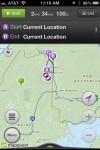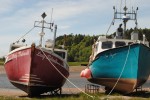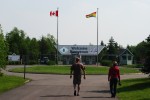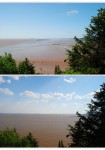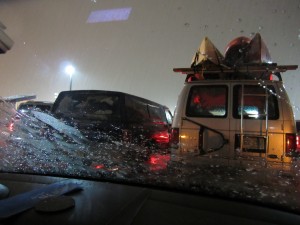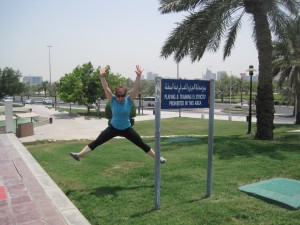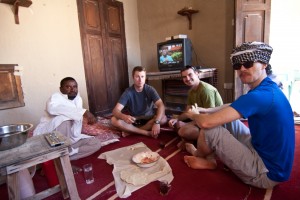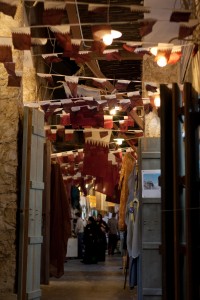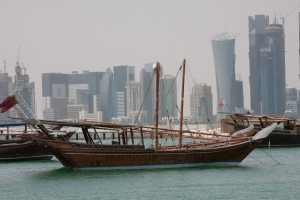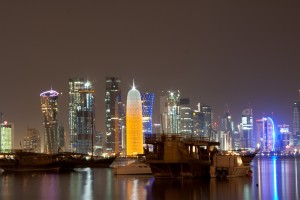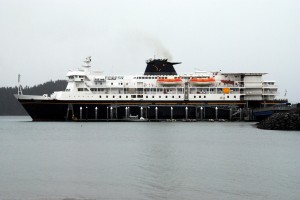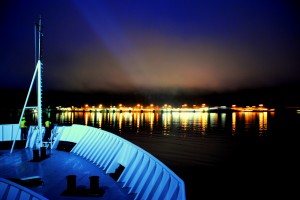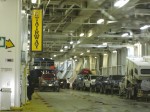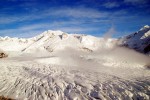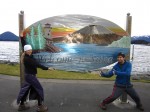Somewhere along the way, Northern Maine changed for me.
I’m not sure if this post is just a story about a surprisingly good assignment or if it’s something deeper about discovering new places. It’s probably not all that deep, but there is a new part of Northern Maine that is A-O-K in my book.
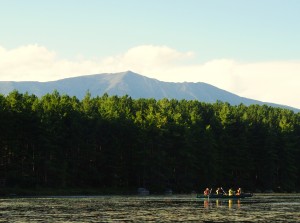
“Katahdin” is a Penobscot Indian term meaning “the greatest mountain.” So, technically, to say Mount Katahdin is redundant and silly – “Mount The Greatest Mountain.” Anyways, it’s much much bigger than anything else around. A shot from our campsite Saturday night.
The speed limit has recently been increased to 75 mph north of Bangor. As far as I can tell, this stretch of highway is totally unpatrolled, and everybody knows it. I haven’t driven over 90 so much since I was seventeen. Driving this stretch at 80 to 90+ you can get from Bangor to the town of Houlton in just under 2 hours, here the interstate takes a sharp right hand turn into Canada, but getting off onto route 1 will carry you north through the farming towns of Aroostook County, or as it is known around Maine, just “the county.” About 45 minutes up that stretch of Rt 1 is Presque Isle, where Kate and I spent the last 13 weeks on assignment. I don’t know what I really expected to find all the way up in Presque Isle, but it ended up being a good town with great people. Right at the end of July, as we got towards the end of our contract, there was one week that I thought had a little bit of everything from our experience up in the county.
The week started out with the opening of the Northern Maine Fair (nohthen-Maine-Fayah). Anyone who has been to a state or county fair knows what I have gotten myself into: farm animals galore, bigger-than-your-head vegetables, carnival rides, the pinnacle of people watching, and if it can be eaten – it’s gonna be better fried, then eaten. The Northern Maine Fair is something you hear about, but don’t actually know anyone that has gone. The collection of people was… eclectic.

A little different shot I got of Katahdin later Saturday night, again from our campground. Beautiful Northern Maine skies unaltered by lights or pollution.
My days in the woods continued on Monday when out for my evening run on roads in my neighborhood, I came upon a momma bear and 3 cubs. It really was not that spectacular of a meeting – I surprised her, she definitely surprised me, and we both wanted to get further away from each other. As I back pedaled to put some distance between us, she rounded up her cubs and headed into the woods in a hurry. One cub had gotten away to the wrong side of the road, so I had some fear of continuing on with my run knowing I would have to run between a black bear and her cub. Kate was able to come from town and pick me up after I ran a couple miles in the other direction. Disaster adverted.
On Tuesday, Kate and I celebrated our wedding anniversary by going out to the nicest restaurant in town, Café Sorpresso. I had the seared scallops with maple butternut squash ravioli. Wicked good! I was stuffed to the brim. On the way home we drove up to the high part of town up on a hill where the hospital we were working at is located. We parked by the side of the road to watch the fireworks set off from the fairgrounds before calling it a night and heading on home.
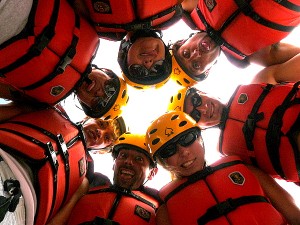
OK, some admissions about this picture. It isn’t from this summer. It isn’t even from Maine. This is a picture of Kate and I with a group of strangers we met rafting on our first assignment together in Colorado Springs. The guy at 6/7 o’clock in the photo is Adam, he’s an actor. He was on NCIS once. He had speaking lines and everything, but by the time I got the show turned on, he was playing a dead guy. Sorry I missed it, Adam. Cool people, fun day.
We capped off that week the way we did most weeks, off enjoying the great outdoors. We hopped back on the interstate at breakneck speeds and headed south to Millinocket for hiking in Baxter State Park and the best rafting in the East. Baxter State Park is a huge chunk of Maine with Katahdin as its center piece. When hikers are nearing the end of 6 months on the Appalachian Trail, they spend 100 miles in the wilderness without any towns for supplies. They are eventually spit out at the base of a 5,000ft mountain with their finish at the top – that’s Katahdin. We had a nice hike in the area on Saturday, and headed to our tent site to prepare for rafting the Penobscot River the next day. A day on the Penobscot starts with rafting over a 14ft waterfall. The second half of the day contains the Cribworks, an infamous class V rapid. The only picture of our boat in the Cribworks is of the bottom of it. Somehow we all stayed in the boat, but I think a few people had switched seats on the way through the rapid. We were having such a great escape out to the woods, that we decided to put our 2 hour drive back to Presque Isle off until Monday morning before work. At 4 A.M. we packed up our tent and silently slipped out of the campground to head back to work.
I guess that’s it. One week lived in Northern Maine that was representative of the whole experience: A lot of outdoors fun, some country time, some more classy and cultural events, and good work with good people. Now we search on for our next jobs. Where we’re looking has been a pretty rough market, so I don’ know if we’ll be living right where we want, but we’ll find something… and we’ll make the best of it!




